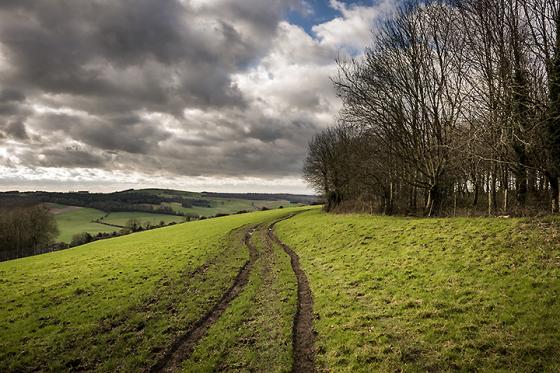
Open Source Environment agency LIDAR

Open Source Environment agency LIDAR

The whole site from the top of the more northerly barrow

The second barrow at the Barkhale site looking to the north west

The enclosure with one of the two quite large, but low round barrows adjacent to it.

The edge of the enclosure looking roughly south east

The view north west from the path that runs trough the centre of Barkhale. The rise on the path ahead, and to either side, is the only substantial trace of the enclosure bank that I could make out. The shade behind helps with the contrast.
Taken 2/8/99
Not a visually exciting site this one. But still good to know you stand on ground that, at one time, held a special meaning. It’s also strange to think that the Romans, when they were laying nearby Stane Street, probably had not the slightest clue this site was here.
The South Down’s Way meets the Roman road at Bignor Hill car park. Diverting off the Way south, then south west along the Monarch’s Way, takes you right through the centre of the enclosure.
On your right the south western third of the site is delineated by scrubland, presumably cleared from the interior of the site for archaeology in 1983. The treeline, therefore, marks the edge of the enclosure.
On the left, the north eastern two thirds of the site lie in an open field, and seem invisible, though it is only in this part that remains of the enclosure seem to have been recorded.
Entering the enclosure from the north west, at SU974126, one walks over a very low rise in the ground, which is the only original physical sign of the enclosure I could make out.
“A dragon once lived on Bignor Hill, where ridges made by its coils can be seen.”
It doesn’t seem wholly unlikely that this folklore could refer to the enclosure, which is slightly along the ridge from Bignor Hill. The area also has many Bronze age barrows. Folklore from the Sussex County Magazine, III, 1929, p552, by F.J. Bulstrode.
A very good aerial photo of the site from Multimap, in case you don’t believe me once you’ve been there yourself :-)
Information on Barkhale from the Internet Archaeology Journal






































